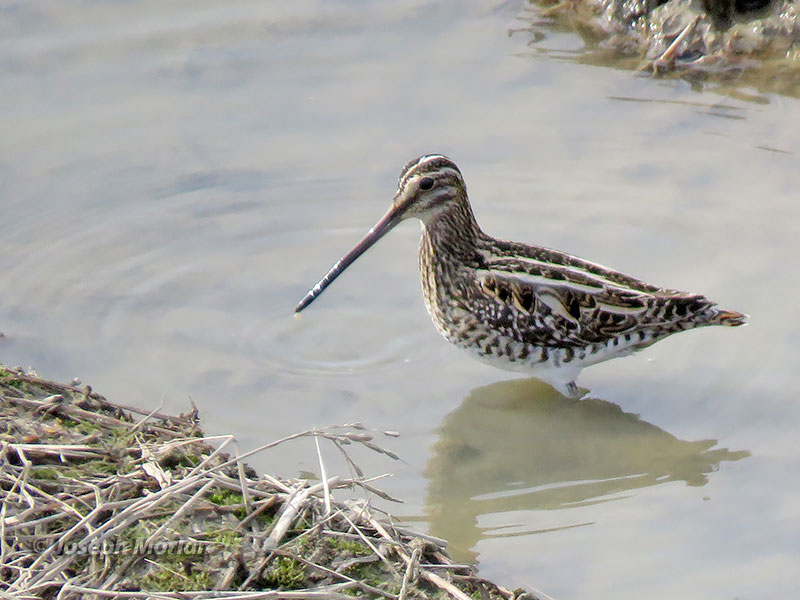
Snipe tend to be more active at dusk and dawn. During the day, they are easy to overlook as they sit still in the marsh vegetation. Their very long bill is used to probe for worms and other invertebrates deep in the mud. The tip of the bill can be opened independently of the rest of the bill so that the birds can grab tasty morsels from the mud. This is a feature called "rhynchokinesis." Note the tail projecting beyond the wings and no primary projection beyond tertials. These features help distinguish the Common Snipe from the otherwise similar Pintail and Swinhoe's Snipes, both of which are rare visitors to Japan in migration and winter. This secretive species was formerly lumped with the Wilson's Snipe (G. delicata) of North America. However it differs in its courtship display flight, and the winnowing sounds made by its outer rectrices during courtship. It also differs slightly in plumage and has more and wider rectrices cf. Wilson's Snipe. Canon PowerShot SX60.
References:
Chandler, R. (2009). Shorebirds of North America, Europe, and Asia: A photographic guide. Princeton.
Howell, S.N.G., Lewington, I. & Russell, W. (2014) Rare Birds of North America. Princeton Univ. Press
Mccleese, C. 2018. "Gallinago gallinago" (On-line), Animal Diversity Web. Accessed April 19, 2019 at https://animaldiversity.org/accounts/Gallinago_gallinago/
Rasmussen, P.C. & Anderton, J.C. (2005) Birds of South Asia. The Ripley Guide. Vols. 1 and 2. Smithsonian Institution & Lynx Edicions, Washington, D.C. & Barcelona.
Van Gils, J., Wiersma, P., Kirwan, G.M. & Sharpe, C.J. (2019). Common Snipe (Gallinago gallinago). In: del Hoyo, J., Elliott, A., Sargatal, J., Christie, D.A. & de Juana, E. (eds.). Handbook of the Birds of the World Alive. Lynx Edicions, Barcelona. (retrieved from https://www.hbw.com/node/53878 on 19 April 2019).